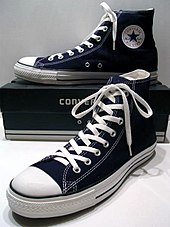Wow! The last post! I had not anticipated how hard it would be to learn and post something new for 365 consecutive days. In all, it was really fun. I particularly loved when my kids would ask me what I learned during the day, when they had special requests for me to learn something they were interested in, and especially when they taught me something new. I would also like to thank some special friends and family (you know who you are) who taught me cool stuff throughout the year.
And so, without further ado, the last thing I learned in 2010 came from a novel aptly titled One Day, as in one day at a time, which is the attitude I had to take in order to complete this blog (and personal goal).
I recently began reading One Day by David Nicholls, a British author. The story starts with a young couple on their last day as undergraduates on July 15, 1988, and then revisits the couple on that same day for the next two decades, to show us what has become of their lives and their relationship.
I learned that July 15 is St. Swithin's Day, which is sort of like a British Groundhog Day, a day on which people watch the weather because tradition says that whatever the weather is like on St. Swithin's Day, it will continue so for the next forty days.
There is even a well-known weather rhyme throughout the British Isles:
St. Swithin's day if thou dost rain
For forty days it will remain
St. Swithin's day if thou be fair
For forty days 'twill rain nae mair.
(For us non-Britons "dost" means "does" and "nae mair" means "no more.")
The legend originally only concerned rain, but later related to 40 days of similar weather. There is very little truth behind these sayings, and since 1861 there has neither been 40 dry nor 40 wet days following a dry or wet St. Swithin's Day. In fact, on average, about 20 days with some rain and 20 rain free days can be expected between July 15th and August 24th.
365 Things in 365 Days
I believe that a day is not complete until you learn something new. This blog will chronicle the (at least) one new thing I learned every day in 2010. It might be comical. It might be serious. It might be something you already know. But it will be new to me.
Friday, December 31, 2010
Thursday, December 30, 2010
No. 364 - Peameal Bacon
We are visiting friends and this morning one of them was running out to get some bagels. I asked if he could pick me up a large coffee. He said he doesn't drink coffee but most people order a "double-double." I asked what that was and he said it was two cream and two sugar. That sounded mighty fine to me. He said he was going to make eggs when he got home and that he was going to get some Peameal Bacon. I thought maybe he was talking about Canadian Bacon.
I learned that Peameal Bacon is similar to Canadian Bacon. It is cured but not smoked. Canadian Bacon is basically smoked ham. Peameal Bacon is made from pork loins. They are trimmed of all the fat and the bones are removed. The term peameal comes from the ground yellow peas with which the bacon was originally coated. This ensured better curing and shelf life and avoided bacterial problems. Over the years this tradition was changed to cornmeal, due to the availability of corn.
It was some of the most delicious bacon I have ever eaten.
I learned that Peameal Bacon is similar to Canadian Bacon. It is cured but not smoked. Canadian Bacon is basically smoked ham. Peameal Bacon is made from pork loins. They are trimmed of all the fat and the bones are removed. The term peameal comes from the ground yellow peas with which the bacon was originally coated. This ensured better curing and shelf life and avoided bacterial problems. Over the years this tradition was changed to cornmeal, due to the availability of corn.
It was some of the most delicious bacon I have ever eaten.
Wednesday, December 29, 2010
No. 363 - Boxing Day
We were driving in the truck today and my wife asked me if I knew what Boxing Day was. I said that I did not but that I didn't think it had anything to do with the sport of boxing.
I learned that Boxing Day is a bank or public holiday that occurs on December 26, or the first or second weekday after Christmas Day, depending on national or regional laws. It is observed in Australia, Canada, New Zealand, and the United Kingdom.
The exact etymology of the term "boxing" is unclear and there are several competing theories, none of which are definitive. The tradition has long included giving money and other gifts to those who were needy and in service positions.
Some claim that it goes back to the early Christian era when metal boxes placed outside churches were used to collect special offerings tied to the Feast of Saint Stephen.
In the UK, it became a custom of the nineteenth-century Victorians for tradesmen to collect their "Christmas boxes" or gifts on the day after Christmas in return for good and reliable service throughout the year.
Another possibility is that the name derives from an old English tradition: in exchange for ensuring that wealthy landowners' Christmases ran smoothly, their servants were allowed to take the 26th off to visit their families. The employers gave each servant a box containing gifts and bonuses (and sometimes leftover food).
I learned that Boxing Day is a bank or public holiday that occurs on December 26, or the first or second weekday after Christmas Day, depending on national or regional laws. It is observed in Australia, Canada, New Zealand, and the United Kingdom.
The exact etymology of the term "boxing" is unclear and there are several competing theories, none of which are definitive. The tradition has long included giving money and other gifts to those who were needy and in service positions.
Some claim that it goes back to the early Christian era when metal boxes placed outside churches were used to collect special offerings tied to the Feast of Saint Stephen.
In the UK, it became a custom of the nineteenth-century Victorians for tradesmen to collect their "Christmas boxes" or gifts on the day after Christmas in return for good and reliable service throughout the year.
Another possibility is that the name derives from an old English tradition: in exchange for ensuring that wealthy landowners' Christmases ran smoothly, their servants were allowed to take the 26th off to visit their families. The employers gave each servant a box containing gifts and bonuses (and sometimes leftover food).
Tuesday, December 28, 2010
No. 362 - Tuesday Night Football
This evening the Philadelphia Eagles are playing the Minnesota Vikings. The game was moved to tonight after the Sunday scheduled game was postponed after a blizzard was expected in the Philadelphia area. It is the first Tuesday night NFL game since 1946.
I learned that the 1946 game was played on Tuesday for the same reason -- bad weather. The New York Giants and Boston Yanks were set to open their 1946 regular season on Monday, September 30 at Braves Field in Boston, but a torrential downpour forced the teams to move the game to Tuesday.
In that game, the Giants beat the Yanks 17-0.
I learned that the 1946 game was played on Tuesday for the same reason -- bad weather. The New York Giants and Boston Yanks were set to open their 1946 regular season on Monday, September 30 at Braves Field in Boston, but a torrential downpour forced the teams to move the game to Tuesday.
In that game, the Giants beat the Yanks 17-0.
Monday, December 27, 2010
No. 361 - Duran Duran
I read somewhere today that Duran Duran, the pop sensation from the 1980s released a new album last week called All You Need Is Now. It is their thirteen studio album but is being heralded as the follow-up to Rio, their 1982 hit album. I haven't heard any songs from it yet, but will be keeping an ear out for them.
Sunday, December 26, 2010
No. 360 - DSi
It was getting late in the day and I turned to my wife and said I needed to learn something new today. My son immediately responded by asking me to learn about the DSi, his favorite Christmas present. My wife asked what "DSi" stood for. I thought the "i" stood for "internet," which this version of the hand-held game console can connect to.
I did not know that DS stood for "dual screen," which seems obvious now that I know since it has two screens. It also stands for "Developers' System," in reference to developers of new game designs the system was meant to inspire.
The lower-case "i" in "DSi" supposedly symbolizes both an individual person ("I") and the hand-held's cameras ("eyes"). The first camera is placed on the internal hinge, and points toward the user. The second is on the outer casing, and faces away from the user.
I did not know that DS stood for "dual screen," which seems obvious now that I know since it has two screens. It also stands for "Developers' System," in reference to developers of new game designs the system was meant to inspire.
The lower-case "i" in "DSi" supposedly symbolizes both an individual person ("I") and the hand-held's cameras ("eyes"). The first camera is placed on the internal hinge, and points toward the user. The second is on the outer casing, and faces away from the user.
Saturday, December 25, 2010
No. 359 - PF Flyers
This morning while opening Christmas presents, I overheard my dad and father-in-law talking about sneakers. Apparently it was a follow-up conversation to one yesterday about Chuck Taylors. Specifically they were talking about PF Flyers. I cannot recall ever hearing about them before so I asked what PF Flyers were.
I learned that PF Flyers are similar to Chuck Taylors.
They were first produced by BF Goodrich in 1937, so Chucks came first. They had popularity in the 1950s and 1960s, but lost steam during the 1970s, 1980s, and 1990s.
The style most commonly associated with the shoe is the common canvas-duck sneaker, with cloth reaching above the ankle, and a patch that reads "PF Flyers." This common style is called "Center Hi."
I also learned that the PF stands for Posture Foundation. Developed in 1933, this patented insole technology set a new standard in sneaker comfort. The insole technology was first used in BF Goodrich shoes. It involves a wedge-like insert (promoted as the "magic wedge") that moves weight to the outside of the foor, evenly distributing weight, reducing leg strain. As the success of the sneakers with the Posture Foundation insole technology grew in 1937 it became the basis for the brand name, "PF Flyers."
I learned that PF Flyers are similar to Chuck Taylors.
They were first produced by BF Goodrich in 1937, so Chucks came first. They had popularity in the 1950s and 1960s, but lost steam during the 1970s, 1980s, and 1990s.
The style most commonly associated with the shoe is the common canvas-duck sneaker, with cloth reaching above the ankle, and a patch that reads "PF Flyers." This common style is called "Center Hi."
I also learned that the PF stands for Posture Foundation. Developed in 1933, this patented insole technology set a new standard in sneaker comfort. The insole technology was first used in BF Goodrich shoes. It involves a wedge-like insert (promoted as the "magic wedge") that moves weight to the outside of the foor, evenly distributing weight, reducing leg strain. As the success of the sneakers with the Posture Foundation insole technology grew in 1937 it became the basis for the brand name, "PF Flyers."
Friday, December 24, 2010
No. 358 - Chuck Taylors
I was standing in my driveway today with my dad who commented to my son that his sneakers were cool. I said that they were Chuck Taylors. My dad asked what they were. I said, you know, the Converse All-Stars sneaker. My dad asked why I called them Chuck Taylors. I said because that's whose name is written on the patch on the ankle. My dad asked who Chuck Taylor was. I didn't know. So I grabbed my droid and googled it.
We learned that Charles "Chuck" Taylor (1901 – 1969), was an American basketball player and shoe salesman. He is best known for his association with the Converse All-Stars sneaker, the most successful selling basketball shoe in history.
We also learned that the Converse All-Stars shoe, one of the first specially designed for playing basketball, was introduced in the 1910s. Taylor started wearing them in 1917 as a high school basketball player. In 1921, Taylor went to the Chicago Converse Shoes sales offices in search of a job, and was hired. Within a year, Taylor's suggestions of changing the design of the shoe to provide enhanced flexibility and support, and also including a patch to protect the ankle, were adopted. The All-Stars star logo was then immediately included on the patch. By 1923 Chuck Taylor's name was added to the patch, and the shoe became the Chuck Taylor All-Stars.
My son has a black pair of Chucks. I liked them so much, I got myself a matching pair :)
We learned that Charles "Chuck" Taylor (1901 – 1969), was an American basketball player and shoe salesman. He is best known for his association with the Converse All-Stars sneaker, the most successful selling basketball shoe in history.
We also learned that the Converse All-Stars shoe, one of the first specially designed for playing basketball, was introduced in the 1910s. Taylor started wearing them in 1917 as a high school basketball player. In 1921, Taylor went to the Chicago Converse Shoes sales offices in search of a job, and was hired. Within a year, Taylor's suggestions of changing the design of the shoe to provide enhanced flexibility and support, and also including a patch to protect the ankle, were adopted. The All-Stars star logo was then immediately included on the patch. By 1923 Chuck Taylor's name was added to the patch, and the shoe became the Chuck Taylor All-Stars.
My son has a black pair of Chucks. I liked them so much, I got myself a matching pair :)
Thursday, December 23, 2010
No. 357 - Pierogi Pocket
 I read an article in the Wall Street Journal this morning about Google's holiday doodle -- the fancy illustration that shows up on Google's homepage.
I read an article in the Wall Street Journal this morning about Google's holiday doodle -- the fancy illustration that shows up on Google's homepage.This year's holiday doodle debuted this morning. It showed 17 interactive portraits of holiday scenes from around the world. One of the scenes was a table of food. When you clicked on it, it took you to a page showing the search results for "pierogi."
Where I grew up in Pennsylvania, we ate pierogis regularly. In fact, one of the best known pierogi maker, Mrs. T's, was headquartered less than 15 miles away.
I learned that pierogi consumption in the United States is largely concentrated in a geographical region dubbed the "Pierogi Pocket", an area including New York, Pennsylvania, Ohio, Indiana, Chicago, parts of the northern Midwest and southern New England. This region accounts for 68 percent of annual U.S. pierogi consumption. Every July, in Indiana, there is Pierogi Fest and each year Mrs. T's names an annual pierogi capital of this region. The 2009 capital was Binghamton, NY.
Wednesday, December 22, 2010
No. 356 - Fudge
 I called my wife today to double-check which Fudge books by Judy Blume we had. My son asked me several weeks ago to get another one from the series and I forgot until this morning when something triggered me to remember.
I called my wife today to double-check which Fudge books by Judy Blume we had. My son asked me several weeks ago to get another one from the series and I forgot until this morning when something triggered me to remember.The first one we read together was Fudge-a-mania, which happened to be the third book in the series. The kids liked it a lot so we read the first one, Tales of a Fourth Grade Nothing.
Before calling my wife, I typed "Fudge series" or something like that into Google and learned that Fudge was turned into a television series. The series ran for two seasons (1995-1997), with 24 episodes following a television movie adaptation of Fudge-a-mania, which aired on January 7, 1995 in prime time.
Subscribe to:
Posts (Atom)







